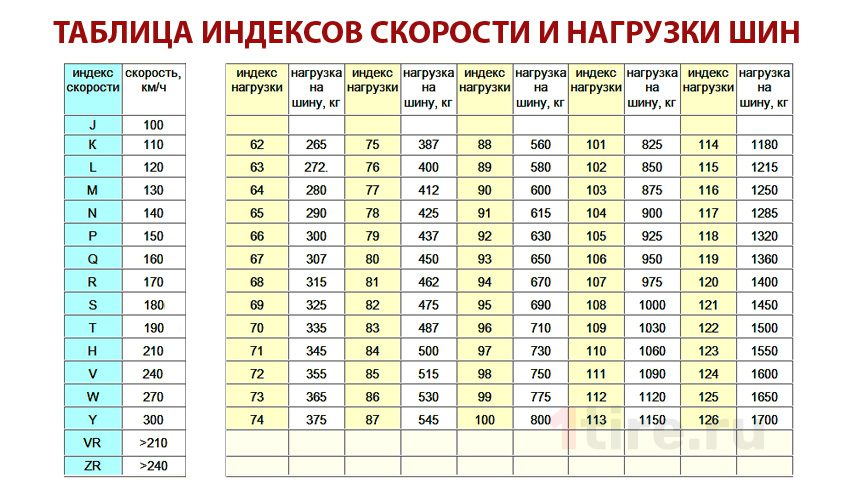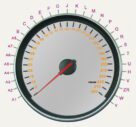
Tire speed index, load index, decoding
Content
Tire speed index indicates the highest safe speed at which the tire is capable of carrying the load specified in the load index. In accordance with international standards, the speed index is indicated by a Latin letter. It can be seen on the sidewall of the tyre, just behind the load index (load factor). The load factor is a conditional value. It shows the largest specific gravity that can fall on one wheel of a car.

Bus speed and load index
Decoding of the index of speed and load of tires
There is a special table for decoding the speed index. It is quite simple and straightforward. In it, each letter of the Latin alphabet corresponds to a certain value of the maximum speed. The letters are arranged in order, as in the alphabet. The only exception concerns the speed index H. The letter H is not in alphabetical order, but between the letters U and V. It corresponds to a maximum permissible speed of 210 km / h.
It should be borne in mind that the speed index indicated on the tire is calculated by the manufacturers based on the results of special bench tests for tires in good condition. In the event that the tires are damaged or have been repaired, the speed index value for them will be different.

Tire Speed Index Table
If there is no speed index at all, then the maximum permissible speed of such a tire is no more than 110 km / h.
To increase the service life of tires, experts recommend using a gentle mode of operation. That is, the vehicle speed should be 10-15% less than the maximum allowable speed.
If you need to install new tires, then their speed rating should be the same as on the tires that were installed at the car factory. It is allowed to put tires with a speed index higher than the initial one. But, using tires with a lower speed index is strongly discouraged. Since, traffic safety is sharply reduced at the same time.
Tire load index for passenger cars
Any standard passenger car tires of the same type and size, regardless of the manufacturer, must have the same load index... This is an international requirement that must be met. At the same time, the tire speed index can vary from 160 to 240 km / h, depending on the type of tread. If the tires are non-standard, then their characteristics must be indicated during manufacture on the side surface of the tire.
Questions and answers:
What does the V speed index mean? This is the maximum speed allowed for a particular tire. The letter V indicates that such tires are capable of withstanding speeds of up to 240 km / h.
How to decipher the inscription on the tires? For example 195/65 R15 91 T XL. 195 - width, 65 - the ratio of the height of the profile to the width of the tire, R - radial type of cord, 15 - diameter, 91 - load index, T - speed index, XL - reinforced tire (in comparison with the analogue of the same type).
What do the numbers on truck tires mean? The numbers on the truck tires indicate: tread width, the percentage of the profile height to the rubber width, radius, load index.

2 comment
Paphnutius
If the maximum load depends on the index, then is it worth buying the tires with the highest index, so that later you have a lower chance of puncturing or damaging them? Or does it make no sense?
TurboRacing
If you own a passenger car that very rarely drives at speeds over 180-200 km / h, then you don't have to think about it.